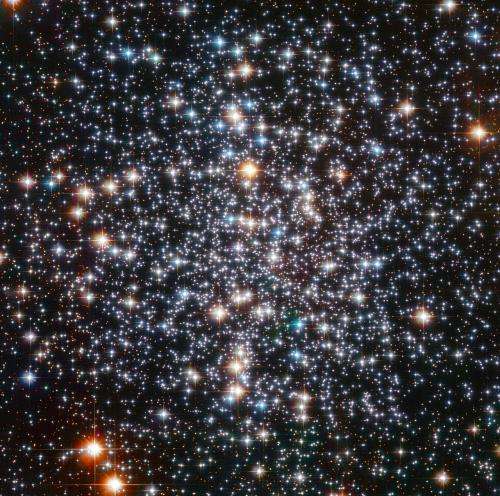Hubble watching ancient orbs

(Phys.org)—This sparkling picture taken by the NASA/ESA Hubble Space Telescope shows the center of globular cluster M 4. The power of Hubble has resolved the cluster into a multitude of glowing orbs, each a colossal nuclear furnace.
M 4 is relatively close to us, lying 7200 light-years distant, making it a prime object for study. It contains several tens of thousands stars and is noteworthy in being home to many white dwarfs—the cores of ancient, dying stars whose outer layers have drifted away into space.
In July 2003, Hubble helped make the astounding discovery of a planet called PSR B1620-26 b, 2.5 times the mass of Jupiter, which is located in this cluster. Its age is estimated to be around 13 billion years—almost three times as old as the Solar System! It is also unusual in that it orbits a binary system of a white dwarf and a pulsar (a type of neutron star).
Amateur stargazers may like to track M 4 down in the night sky. Use binoculars or a small telescope to scan the skies near the orange-red star Antares in Scorpius. M 4 is bright for a globular cluster, but it won't look anything like Hubble's detailed image: it will appear as a fuzzy ball of light in your eyepiece.
Provided by NASA





















